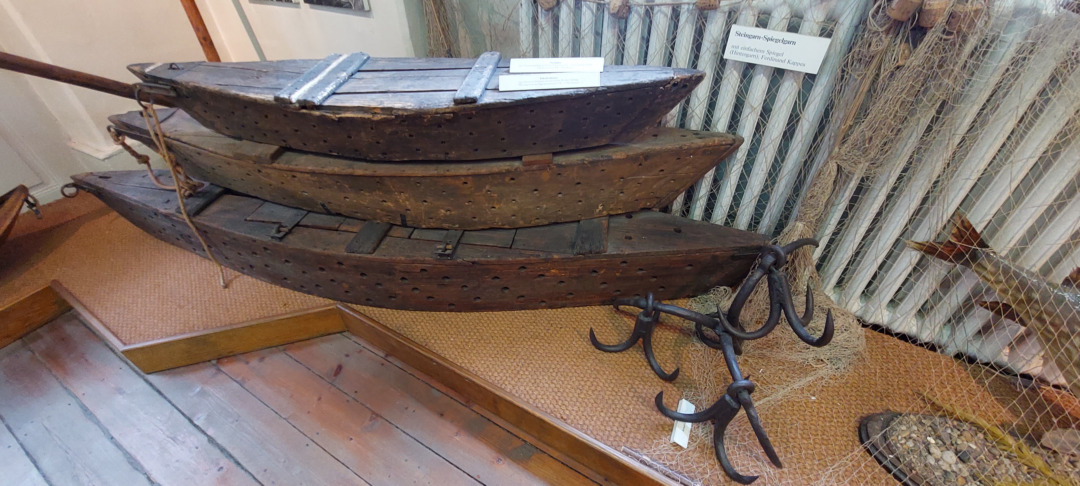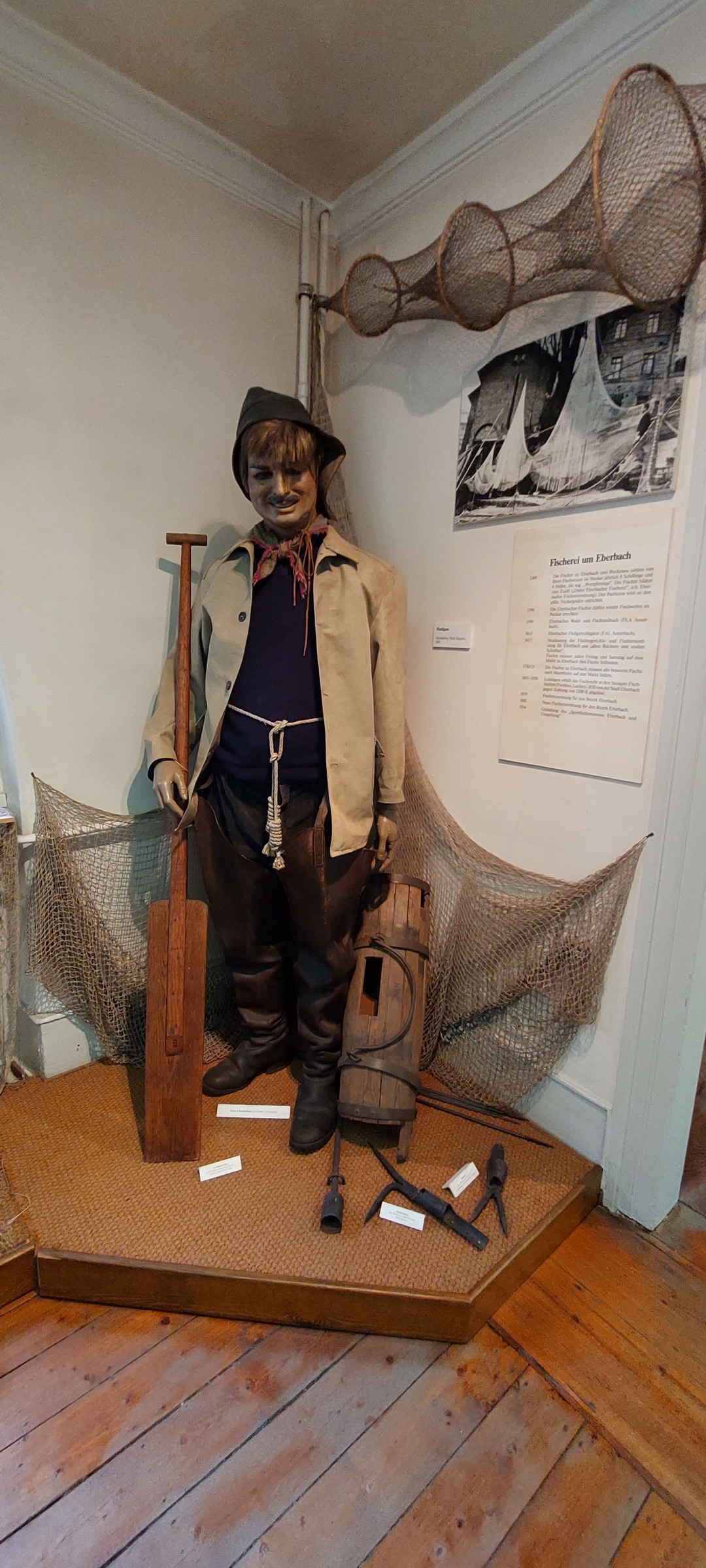
One of the most important professions was fishing, which was sometimes practised by the same branch of the family for centuries. Fishing equipment and nets are presented in a display case: The nets were knitted by hand, mostly in winter. There were two ways of catching fish: with fishhooks, spears or salmon forks, it led to the immediate death of the fish, or at least to its wounding.

When caught with fish traps and nets, the fish remained alive. The eels, pike and tench were transported to Heidelberg and Mannheim in fish boxes. That way they stayed fresh until they landed on the table. Eels were caught with hooks that were spiked with live bait fish. The hooks were attached to lines that were laid out across the stream, but they were not allowed to reach the shipping channel where the chain for the chain tug lay. The spears were fitted with iron prongs and barbs, making it impossible for a hit fish to escape. At the end of the spear was a line with corks hanging from it, which stayed up in the water. This way you could see where the fish was and still catch it.

Salmon forks have 3 to 4 iron prongs with which the salmon had to be hit behind the head.

There was even "company" fishing, in which nets were cast between three and up to ten barges drifting across the river. From so-called "Treiber nachen", which started about 500 metres below this net barrier and then travelled upstream, the fish were driven upstream into the net by hitting, pawing and throwing stones. Once the fish were there, the net was pulled up from the bottom of the river. The fish were then put into fish boxes for transport and sale. As a sideline, the fishermen also earned money by laborious and hard "sand or gravel pulling". With special sieves called lifters, they fetched the material from the river into robust gravel pits that could hold about 6 tons. It took a fisherman half a day to haul such a quantity. On the Lauer, gravel and sand were stored in sheets and sold to bricklayers in the Erbach area in the Odenwald. With the canalisation of the Neckar, professional fishing and sand and gravel hauling came to an end.